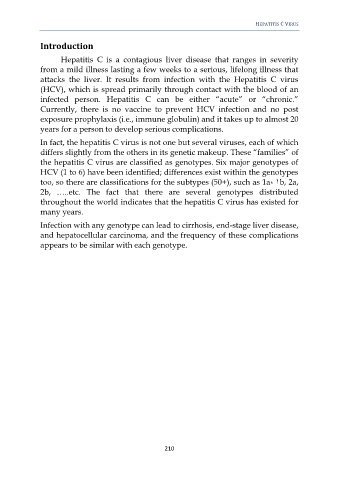Page 241 - fourth year book
P. 241
HEPATITIS C VIRUS
Introduction
Hepatitis C is a contagious liver disease that ranges in severity
from a mild illness lasting a few weeks to a serious, lifelong illness that
attacks the liver. It results from infection with the Hepatitis C virus
(HCV), which is spread primarily through contact with the blood of an
infected person. Hepatitis C can be either ―acute‖ or ―chronic.‖
Currently, there is no vaccine to prevent HCV infection and no post
exposure prophylaxis (i.e., immune globulin) and it takes up to almost 20
years for a person to develop serious complications.
In fact, the hepatitis C virus is not one but several viruses, each of which
differs slightly from the others in its genetic makeup. These ―families‖ of
the hepatitis C virus are classified as genotypes. Six major genotypes of
HCV (1 to 6) have been identified; differences exist within the genotypes
too, so there are classifications for the subtypes (50+), such as 1a, 1b, 2a,
2b, …..etc. The fact that there are several genotypes distributed
throughout the world indicates that the hepatitis C virus has existed for
many years.
Infection with any genotype can lead to cirrhosis, end-stage liver disease,
and hepatocellular carcinoma, and the frequency of these complications
appears to be similar with each genotype.
210

